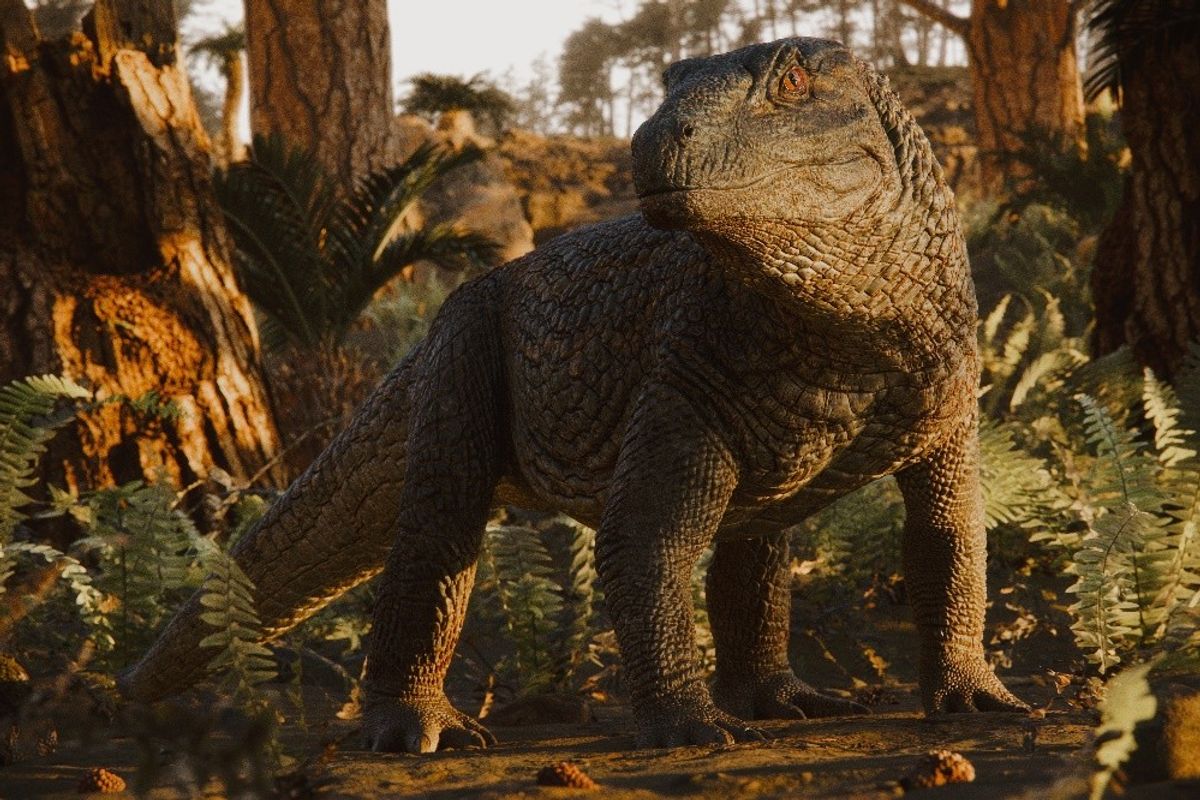During the Triassic period, Earth looked very different. The planet’s landmass formed the supercontinent Pangea, surrounded by a single vast ocean, and home to strange creatures competing for dominance. Among them was one of the earliest relatives of modern crocodiles, roaming Earth as the first dinosaurs emerged.
One of the earliest known realtives of the modern crocodile, discovered in Brazil, Tainrakuasuchus bellator, hunted around 240 million years ago, making it the oldest known member of the crocodile lineage. Its discovery, published in the Journal of Systematic Palaeontology, provides a rare glimpse into ecosystems of the time, when South America and Africa were still connected and life was experimenting to create animals for long-term success.
Read More: As Masters of Survival and Evolution, the Crocodile Now Has Two New Species
Unearthing a Warrior Crocodile Perfectly Built to Hunt
In May 2025, researchers digging near Dona Francisca, Brazil, uncovered a partial skeleton including the lower jaw, vertebral column, and pelvic girdle. From this, they identified a new carnivorous reptile, Tainrakuasuchus bellator, the “pointed-tooth warrior crocodile,” named with words from Guarani (tain, rakua), Greek (suchus), and Latin (bellator) to reflect its sharp teeth and fierce hunting ability.
Based on the fossil evidence, the animal measured about eight feet long, weighed roughly 130 pounds, and likely walked on all fours. Its back was armored with bony plates called osteoderms, which are similar to the natural armor seen in modern crocodiles. With a long, flexible neck and streamlined body, it was well-equipped for hunting a range of prey in the Triassic landscape.
Fossils Show a Fierce Predator That Isn’t a Dinosaur
As a member of Pseudosuchia (the group that includes ancestors of modern crocodiles and alligators), T. bellator was among the top predators during the Triassic era.
“This animal was an active predator,” said lead author Rodrigo Temp Müller from the Universidade Federal de Santa Maria, in a press statement, “but despite its size, it was far from the largest hunter of its time with the same ecosystem home to giants as big as seven meters long.”
Müller emphasized the diversity of Pseudosuchia because they could tackle “robust prey, […] catching swift animals.” Yet despite this diversity, “they remain poorly understood, as fossils of some [of] their lineages are extremely rare in the fossil record.”
Despite them resembling small dinosaurs, Müller explained its anatomy tells a different story. “One of the clearest ways for us to distinguish it from dinosaurs lies in the structure of the pelvis, where the characteristics of its hip and femur joints are very different.”
The discovery also highlights the complexity of early ecosystems. T. bellator stands for a period when different pseudosuchia species occupied specific niches, as described in the news release.
“Its discovery helps illuminate a key moment in the history of life, the period that preceded the rise of the dinosaurs,” said Müller.
Connecting South America’s and Africa’s Ecosystems
The new species also links prehistoric South America to Africa. T. bellator is closely related to Mandasuchus tanyauchen, a predator discovered in Tanzania, reinforcing the idea that the two continents shared evolutionary histories during the Triassic.
“This connection […] can be understood in light of the Triassic Period’s paleogeography,” Müller said. “The continents were united, which allowed the free dispersal of organisms across regions that are now separated by oceans. As a result, the faunas of Brazil and Africa shared several common elements, reflecting an intertwined evolutionary and ecological history.”
T. bellator likely lived along the edge of a vast arid desert, similar to the landscape where early dinosaurs emerged. Its discovery demonstrates that reptiles established solid communities long before dinosaurs became dominant.
From ancient deserts to modern rivers, crocodiles have endured. Their newly unearthed ancestor reminds us that life’s story is long and persistent, stretching across 240 million years of evolution, survival, and adaptation.
Read More: How Crocodiles Have Survived Over 230 Million Years and Two Mass Extinction Events
Article Sources
Our writers at Discovermagazine.com use peer-reviewed studies and high-quality sources for our articles, and our editors review for scientific accuracy and editorial standards. Review the sources used below for this article:

